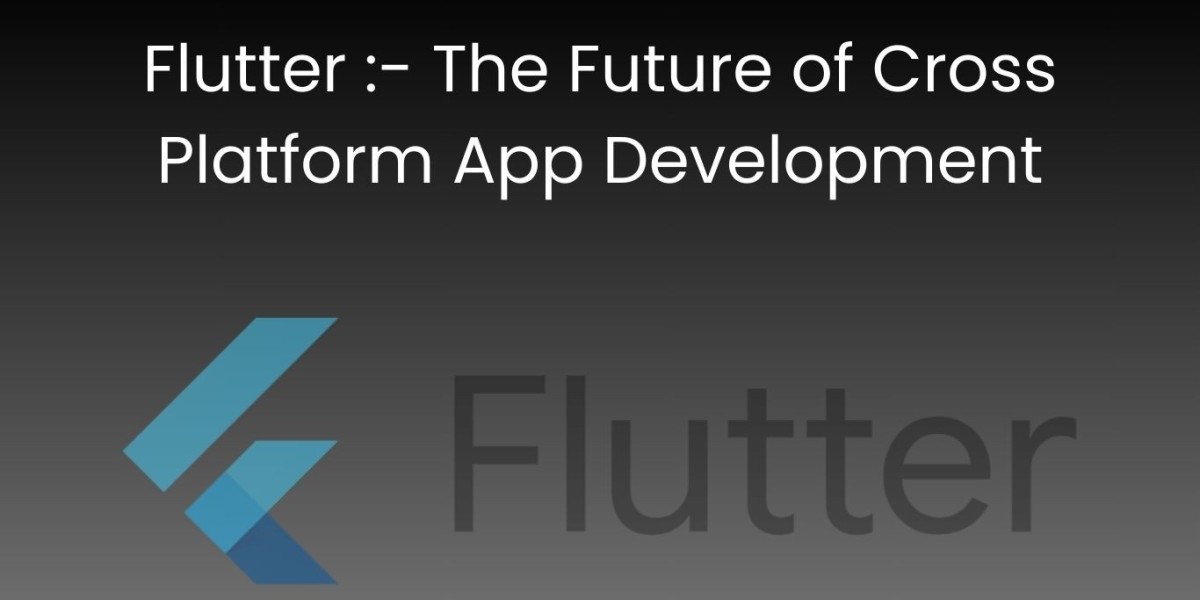In the fast-paced world of mobile app development, the ability to create apps that work seamlessly across multiple platforms is a game-changer. Cross-platform app development has become a cornerstone of the industry, allowing developers to save time, resources, and reach a wider audience. One technology that stands out in this space is Flutter.
Flutter, developed by Google, has emerged as a leading cross-platform framework, revolutionizing the way apps are built. In this blog, we will explore what Flutter is, its advantages, how it compares to other frameworks, and its future in the app development landscape.
What is Flutter?
Flutter is an open-source UI software development kit that enables developers to create natively compiled applications for mobile, web, and desktop from a single codebase. Its core features include a rich set of customizable widgets, a fast development cycle with hot reload, and native-like performance.
Flutter originated from Google and has a fascinating development history. It started as an experimental project called “Sky” and later evolved into the Flutter we know today. Some prominent apps built with Flutter include Alibaba, Google Ads, and Reflectly.
Advantages of Flutter
Flutter offers several compelling advantages for cross-platform app development:
1. Fast Development with Hot Reload: Developers can make changes to the code and see the results instantly, speeding up the development process.
2. Native-like Performance: Flutter compiles to native ARM code, ensuring high performance and smooth animations.
3. Single Codebase: With Flutter, you can write one codebase that runs on both iOS and Android, reducing development time and maintenance.
4. Rich Set of Widgets: Flutter provides a wide range of customizable widgets, allowing you to create stunning, pixel-perfect UIs.
5. Strong Community and Support: Flutter has a vibrant community and comprehensive documentation, making it easier for developers to get help and share knowledge.
Flutter vs. Other Cross-Platform Frameworks
Comparing Flutter with other popular frameworks like React Native and Xamarin reveals its strengths:
1. Flutter’s hot reload feature sets it apart from the competition, enabling rapid iteration and debugging.
2. It offers a single codebase for all platforms, reducing development effort and cost.
3. Flutter’s performance is native-like, ensuring a smooth user experience.
Case Studies
Let’s dive into real-world examples of successful apps built with Flutter:
1. Alibaba: The e-commerce giant’s app uses Flutter for its cross-platform capabilities, delivering a consistent shopping experience to millions.
2. Reflectly: A popular journaling app known for its beautiful design and smooth animations, all thanks to Flutter.
These examples showcase the versatility of Flutter in various industries.
Flutter’s Ecosystem
Flutter’s ecosystem includes a vast array of libraries, plugins, and tools. Some key components that enhance development capabilities are:
1. Dart: The programming language behind Flutter.
2. Flutter Packages: A repository of pre-built packages for common functionalities.
3. Firebase Integration: Seamlessly integrate Firebase services into your Flutter app.
Flutter Web and Desktop
Flutter’s reach extends beyond mobile devices to web and desktop platforms. It enables developers to create applications for the web and desktop with the same codebase, simplifying multi-platform development.
Future Trends and Updates
Flutter is continuously evolving. Upcoming features and improvements include enhanced web support, improved tooling, and expanded compatibility with new platforms. As Flutter matures, it’s likely to become even more dominant in the cross-platform app development landscape.
Getting Started with Flutter
For those eager to explore Flutter, here are some resources and steps to kickstart your journey:
1. Install Flutter and set up your development environment.
2. Explore Flutter’s official documentation and tutorials.
3. Join the Flutter community and participate in forums and discussions.
Final Thought
In a world where efficiency and versatility are paramount, Flutter emerges as the future of cross-platform app development. Its rich feature set, rapid development cycle, and native-like performance make it a powerful choice for developers and businesses alike. As Flutter continues to evolve, it’s clear that it will play a pivotal role in shaping the mobile and multi-platform development landscape.
If you’re looking for Flutter app development services or a Flutter app developer in Canada, consider the potential of this dynamic framework to take your projects to new heights. Embrace Flutter, and you’ll be well-prepared for the future of app development.








